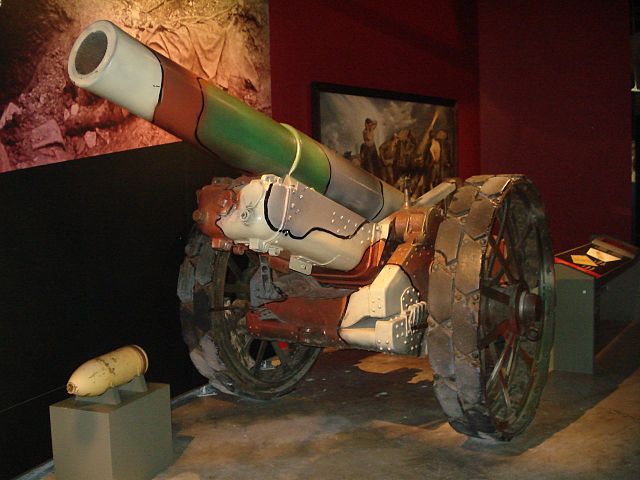BL 8-inch howitzer Mk VI – VIII
The BL 8-inch howitzer Marks VI, VII and VIII were a series of British artillery siege howitzers on mobile carriages of a new design introduced in World War I. They were designed by Vickers in Britain and produced by all four British artillery manufacturers but mainly by Armstrong and one American company. They were the equivalents of the German 21 cm Morser 16 and in British service were used similarly to the BL 9.2-inch howitzer but were quicker to manufacture and more mobile. They delivered a 200 lb (91 kg) shell to 12,300 yd. They had limited service in the British Army in World War II before being converted to the new 7.2 in (180 mm) calibre. They also equipped a small number of Australian and Canadian batteries in World War I and by the US Army in that war. They were used in small numbers by other European armies.
US-built version of Vickers BL 8-inch howitzer Mk 6 outside the War Museum in Helsinki, Finland
Mk VI that has slid off-road behind a Holt artillery tractor, WWI
Mk 8 in WWI camouflage paint at the Canadian War Museum, Ottawa
Gun on Vickers firing platform, and limber, gun and platform being towed
The Ordnance BL 9.2-inch howitzer was a heavy siege howitzer that formed the principal counter-battery equipment of British forces in France in World War I. It equipped a substantial number of siege batteries of the Royal Garrison Artillery. During World War II a limited number were used in the Battle of France, with the remainder being kept in the United Kingdom.
Australian Battery of 9.2 inch Mark I howitzers in action at Fricourt during the Battle of the Somme, August 1916.
Two Mk I howitzers supporting Australian troops near Corbie, May 1918, showing the earth box.
Australian gunners of the 55th Siege Artillery Battery loading a 9.2-inch howitzer, Western Front, July 1916.
Gunners of 56th Heavy Regiment with Mk II, May 1940








